You may try cut zeros ( x[0:12] ), generate function interpolation from (x[0:12],log_y[0:12]), generate bigger linear space in same range x is 12 items new_x is 50 items in space range (not item index) 0,x[11], and plot with f(new_x), as follows:
>>> x
[0, 1, 2, 3, 4, 5, 6, 7, 8, 9, 10, 11, 12, 13, 14, 15, 16, 17, 18, 19, 20, 21]
>>> y
[4194304, 497420, 76230, 17220, 3595, 1697, 491, 184, 54, 15, 4, 4, 1, 1, 1, 1, 1, 1, 1, 1, 1, 1]
>>> log_y
[15.249237972318797, 13.117190018630332, 11.24151036498232, 9.753826777981722, 8.187299270155147, 7.436617265234227, 6.19644412779452, 5.214935757608986, 3.9889840465642745, 2.70805020110221, 1.3862943611198906, 1.3862943611198906, 0.0, 0.0, 0.0, 0.0, 0.0, 0.0, 0.0, 0.0, 0.0, 0.0]
>>> f2=interp1d(x[0:12],log_y[0:12],kind='cubic')
>>> x_new_fit=np.linspace(0,x[11],50)
>>> plt.plot(x_new_fit,f2(x_new_fit),'-')
[<matplotlib.lines.Line2D object at 0x3a6e950>]
>>> plt.show()
experiment with different kinds of interpolation, to achieve different kind smoothness
>>>
>>> f1=interp1d(x[0:12],log_y[0:12],kind='quadratic')>>> plt.plot(x[0:12],log_y[0:12],'-',x_new_fit,f2(x_new_fit),'-',x_new_fit,f1(x_new_fit),'--')
[<matplotlib.lines.Line2D object at 0x3a97dd0>, <matplotlib.lines.Line2D object at 0x3a682d0>, <matplotlib.lines.Line2D object at 0x3a687d0>]
>>> plt.show()
>>>

